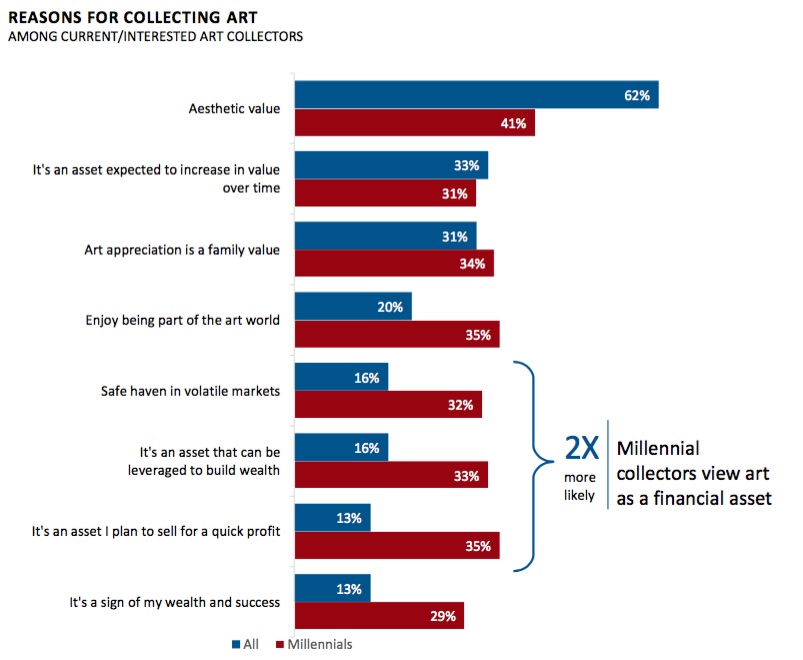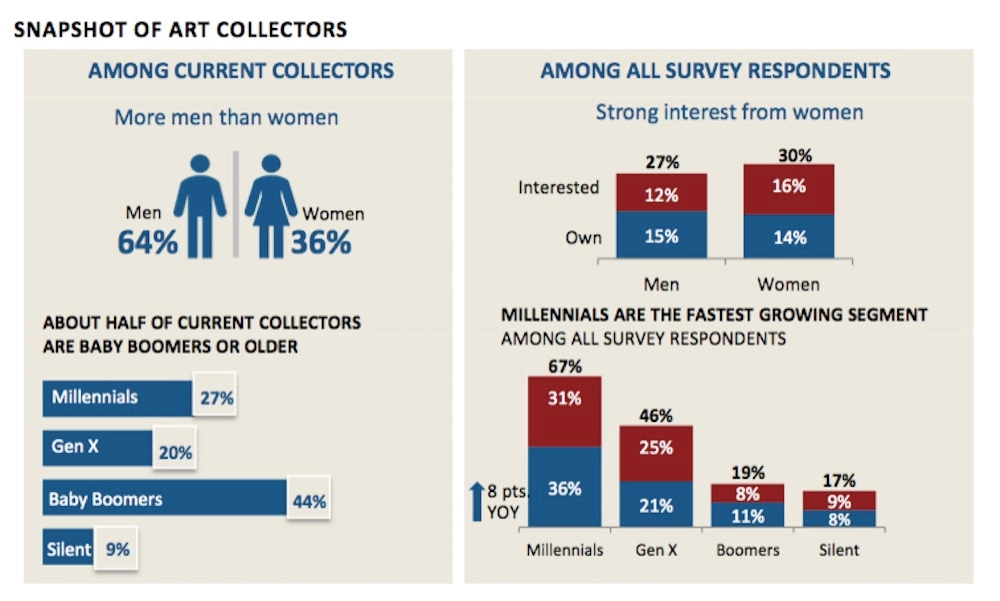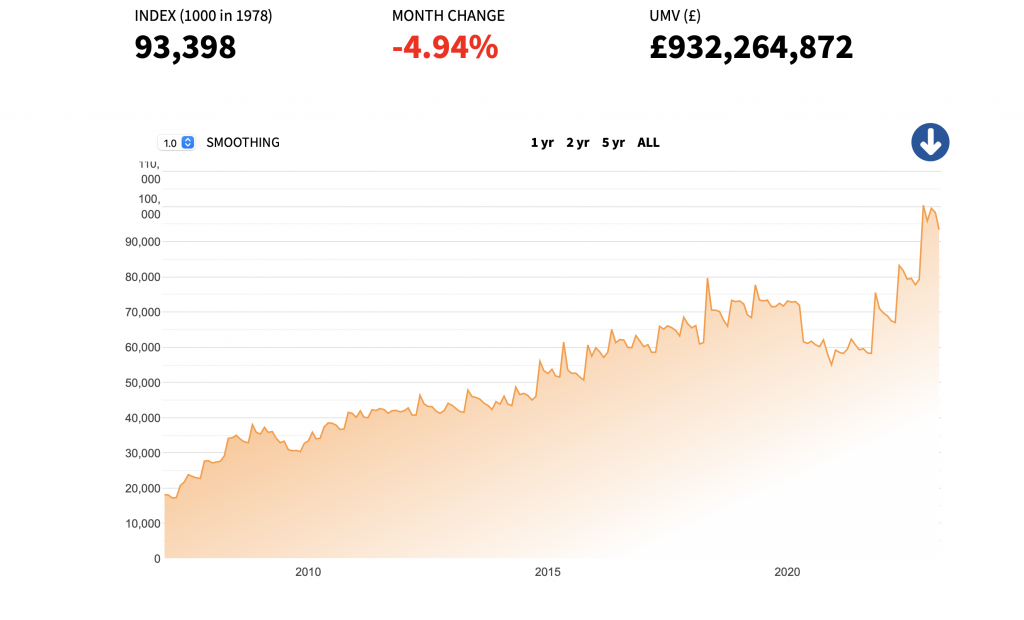My dear Friends,
You’ve probably noticed it too—Buying Art seems to defy gravity. Prices have been climbing for years, as if beauty were immune to market logic. Andy Warhol’s Shot Sage Blue Marilyn sold for $195 million, making it the second most expensive piece ever auctioned. The record-holder, Salvator Mundi, attributed to Leonardo da Vinci despite persistent doubts about its origin, fetched a staggering $430.5 million. Even Frida Kahlo’s work, once dismissed as too emotional, reached $34.5 million—an amount she could never have imagined in her lifetime.
In 2022, the art market took a hit alongside the stock market and crypto crash—favourites like Basquiat, Banksy, or Beeple took a severe hit. However, Warhols, Monets or Picassos fetched higher prices than ever before.
On the other hand, the art game seems pretty exclusive. Recent price rallies have shown that art does not come cheaply, and as investors, we only want to buy the best. So we assume quite a lot of money is needed to start a collection, and this is probably way out of budget for many.
So, is buying art a smart investment, or simply the most glamorous hobby in the world?
How it all startet
The origins of collecting can be traced back to the ancient civilizations of Egypt, Babylonia, China, and India. Frequently these objects, accumulated in temples, were used to display the glory of a ruler and religion.
During the Renaissance Period, commissioning artworks or having a great collection was directly connected to the patron´s social status, erudition, and taste. During this time, the artists also obtained a higher status and fame.
For the last two-hundred years, the practice of collecting art has grown to unimaginable heights. As time has gone by, the art world has gotten more complex. Motivations behind collecting have oscillated between the love of art and a well-thought-out investment strategy for the future.
Over the last decades, the art community has evolved into a machine encompassing art dealers, art fairs, galleries, art advisors, artists, and many others aimed at helping collectors acquire the right piece at the right price. Importantly, the technological tools available have also brought immediacy to the process of acquiring new pieces. Not to mention globalisation’s effect on introducing collectors to otherwise inaccessible artists.
The collector-investor
Usually, genuine art lovers start collecting artwork for aesthetic reasons. Others only seek to accumulate possessions no one else has. For art collectors, both of these reasons are true, but there are several specific reasons are lovers choose to collect art:
- support the arts
- be part of a community
- preserve history
- experience the thrill
- decorate their homes
- reveal their personality
- tell a story
- pass on a legacy
uber-wealthy only?
Many people relate art collecting to wealthy people. Those who can afford to sit in private auctions spend millions of dollars buying art. Only to resell within several years when its value rises again.
Of course, buying a work of art outright is a legitimate option for investors with serious cash lying around. Think five, six, seven, or even eight figures. A plate by Picasso is yours for $5,000. However, an oil painting of one of his mistresses is more like $155 million.
It is definitely a widespread myth that you need millions to start a significant art collection. This is why many perceive art collecting as an unreachable dream.
Like the stock market, the art market has become a lot more democratized. Similar to the financial industry that developed Fintechs. Many businesses involved in the art industry are lowering barriers and adapting readily available tools and platform technology. These recent market trends allow a whole new generation of collectors to start their art collections.
The new generation
Baby boomers are still the dominant generation of art collectors, comprising about half of all current collectors. However, millennials are the fastest-growing segment.
While aesthetic enjoyment continues to be the primary reason for collecting art, “a generational shift is now underway.” Younger collectors tend to be more financially driven and attuned to the role of art as a financial asset. A third of millennial collectors see their art as an asset to leverage into more wealth. The same survey found that this new generation of aspiring collectors is also drawn to the social aspects of collecting, such as engaging with other collectors and artists.

The survey also showed a considerable uptick in online art buying. Women were the biggest drivers of the growth in online acquisitions, which may be partly attributed to the “rise of the digital channel for decorative arts in particular,” according to the survey.
While male collectors still largely dominate the traditional art market, women are an undeniably growing force. One in three high-net-worth women either owns art (14 %) or is interested in collecting (16 %), with interest among women higher than men.

Investment or hobby- does it pay off?
Investing in artwork can feel more like a dice roll than an investment. However, thanks to big-ticket auction sales, painting and sculpture collectors have generated significant buzz around the art market over the years.
Art Basel and UBS Global Art report show the global art boom is no passing fad. It seems beauty doesn’t exist solely in the eyes of the beholder — markets stake an objective claim to its value. So, it is true investing in art can generate net serious returns. But beware, there are risks and drawbacks.

Generally speaking, art is an excellent investment because it holds its value over time, respectively the value usually increases steadily over time. Compared to stocks or other investments-art fluctuates less.
The art market is not highly correlated with the stock or bond markets. That’s exactly what investors should be looking for when diversifying their assets. No matter what the financial markets are doing — moving up or trending down — the art market tends to act independently and is often considered a safe haven during periods of high inflation.
For example, while both stocks and bonds were declining in the first half of 2022, art auctions were setting new record prices.
Due diligence
However, as an investor, you must remember that Art is a highly illiquid asset class. It can take years to have a piece of art sold at auction. That’s why it’s always recommended to consider art investing as a medium- to long-term addition to your portfolio.
Remember, as with any financial investment; extensive research is a must. If in doubt, speak to a curator or specialist. Overall, art investing is hard work. For an artwork to generate significant returns, the buyer must consider the overall influence of the artist beyond media praise and public recognition.
Successful art purchases are the product of diligent planning and thorough research of the art’s historical and cultural significance. But art is a great investment because it diversifies your portfolio. having a variety of assets in your portfolio helps to minimize risk.
Art investing for beginners
The first and most important rule- as with any other investment- is to dedicate several months to the passive observation of art auction news and valuation trends. As a rule, the works of prolific living artists are appraised at a value lower than those of a deceased master artist with a finite number of works attributed to them.
Smart investing
To make money investing in art, you have to nail the basics. Treat your art purchases like alternative investments. As if you were purchasing stock or other securities.
- be passionate about art
- set a goal
- do research
- join a community
- seek expert help
- decide on your budget
- make informed decisions
- be wary of the risks
Invest in art when prices are low. That usually means the earlier an artist is in their career, the more affordable they will be. Various art market indexes give a good guideline on the development of artists. Investing in “emerging artists”, however, also bears higher risk.
To be on the safe side, you could invest in “an established artist or “a mid-career artist. The drawback is the considerably higher price. These artists have already succeeded in the art markets. They have sold at auction houses, with consistent returns on investments.
There is also the category of “blue chip” art. These are the biggest names in the art world and are truly low-risk investments. These works hang in the most prestigious museums the drawback, however, is the hefty upfront investment.
Vital Tool- Art market indices
Art-market indices can help collectors and owners to understand this asset class better. Investing is both an art and a science. Improvements in data science make art indices a more viable tool for understanding trends in art markets.
Art indexes do have their limitations, to be sure. Art is a large, heterogeneous, unregulated market in which more than half of all sales are private. The unique qualities of a work of art, including its provenance and condition, affect individual prices. Additionally, ever-changing tastes greatly influence valuations. What’s more, most art indices don’t include work that fails to sell.
These benchmarks improve continuously and are increasingly helping collectors understand the value of what they own. Thus being able to identify pricing trends and make better decisions about owning and planning around their art.
Extra cost
Art is typically a tangible, hard asset. Unlike intangible assets such as retirement accounts, art takes up physical space. Care and maintenance are required to ensure that the art retains its value. If you’re displaying the art in your home, you’ll need to be mindful of the temperature, humidity, sunlight, and other factors that could degrade the work.
Also, bear in mind there are various other costs to consider with the purchase and sale of artwork. Nitty gritty like sales tax, transportation expenses, authentication and appraisal fees, and insurance.
Finally, art is a long-term investment, and while the art market can be stable or show large returns on investment during boom times, it can, just like any other asset, plummet in value during seasons of recession.
Importantly, if you’re going to buy individual works of art, you probably want to buy works that make you happy. If you invest $10,000 in a painting that you think is ugly just because you expect its value to rise, then you’re missing out on the fun part of investing in art versus other asset classes.
Beware of con-artists
The most problematic thing in the art world is the people. Plenty of Inflated egos among artists, collectors and well-known figures from “the industry” and the art business. Fake people are everywhere, but the art world is full of imposters, fakes and con-artists. They have been deceiving people for decades. With fake paintings, fake social status or a fake celebrity.
From Anna Delvy and Wolfgang Beltracchi to Inigo Philbrick. The first was a fake heiress defrauding investors. The second was an art forger who made millions by faking other artists’ paintings. The latter defrauded art investors with a Ponzi-like scheme. The art market is the swindler most favourite playground.
Seemingly endless fraud lawsuits swamp the art world. Charges range from art trafficking and selling fakes to fraud and money laundering. Many con artists enjoy the high life at the top of the market for years until they finally get caught.
Art investing for small budgets
Art collecting and investment are no longer limited to the uber-rich. If you’re interested in art and you don’t want the hassle of owning a piece of art. Or if you lack the funds to buy blue-chip art. It’s still possible to invest in artwork.
Just as robo-advisors have helped to democratize access to financial advice and portfolio-based investing, there are platforms that allow investors who aren’t filthy rich to own a share of artwork. All for only a few hundred or thousand dollars.
By and large, art investment platforms work in fairly similar ways. Some buy individual artwork themselves, then create and list shares that other investors can buy. They make money by charging a fee for managing the process and storing and insuring the art on investors’ behalf.
Art funds
Art funds, which are structured much like other investment funds, allow investors to partially own pieces of art. The fund usually creates a holding company for each piece of art to acquire. A fund manager acquires blue-chip art at auctions on behalf of its investors. The fund stores, promotes, and resells this piece of blue chip art for a profit. Funds have to register and comply with a country’s law for investment funds, just like any other financial market fund.
Bear in mind the investors don’t get to take possession of the art physically.
Art shares
Investors are buying shares of a single piece of art rather than investing in a fund that includes multiple works. The entry price is much lower. Provided there are willing buyers for the share of artwork, investors aren’t locked into the fund for a particular period. Investors can earn a return by selling shares that go up in value, without waiting for the artwork to be sold.
Art finance
As much as you can borrow money to buy art, you can borrow against the art you own. The first offers a loan for the purchase of a piece of art. The loan has to be paid back over a 10-month period. The latter enables borrowing against your collection, with your art as collateral. This enables the owner of a piece of art to quickly realise liquidity without having to sell.
NFT
In 2021 a new type of art and investment emerged into the art world. Christie’s record sale of Beeple’s Everyday: the First 5000 Days NFT for $69 million. It was easy to make money in the ultra-hyped NFT market. People were locked up, bored, and had a lot of money available. But that was not all. Big auction houses like Christie’s and Sotheby’s went online, and the Metaverse was born.
It was a simple online procedure. Invest via a platform in a new token and watch your investment grow as demand for the token increases.
NFTs (non-fungible tokens) can represent ownership in almost anything, from digital art to virtual real estate. Contrary to Bitcoin or dollars, NFTs are described as Non-Fungible because each one is unique and has its own value.
Today non-Fungible Tokens (NFTs) have clearly lost the lustre they had in early 2021. The bull run is over, liquidity has evaporated, and trade volumes have tanked. OpenSea, an NFT trading platform, experienced a drop of more than 90% between January and August 2022. The market was clearly inflated, and the NFT bubble had to burst sooner or later. Reports also suggest that the NFT market was severely affected by the collapse of the cryptocurrency industry. The NFT market tanked from $17 billion in January 2022 to $466 million in September of the same year.
The NFT consumer
Some believe the market is dead, while others claim the market will bounce back eventually.
Now What?
Art is certainly a great investment for anyone looking for more diversification in their portfolio. As with any other investment, an art investment needs a goal and informed decisions.
Art investors need to understand that art is a long-term addition to a portfolio and a highly illiquid investment.
Just as robo-advisors have helped democratize access to investing, some platforms allow investors to own a share of artwork for only a few hundred or thousand dollars.
Art investments can generate high net returns. But there are risks and drawbacks.
SOURCES: TATLER; MORGANSTANLEY;THE ART NEWSPAPER; FORBES; VIENNA CONTEMPORARY MAGAZINE; THE HELM; ARTSY.NET; MASTERWORKS; CNBC; BBC; MANAGER MAGAZINE; ARTELIER; DELOITTE; MOTLEY FOOL; MYARTBROKER; ECONOMIST





